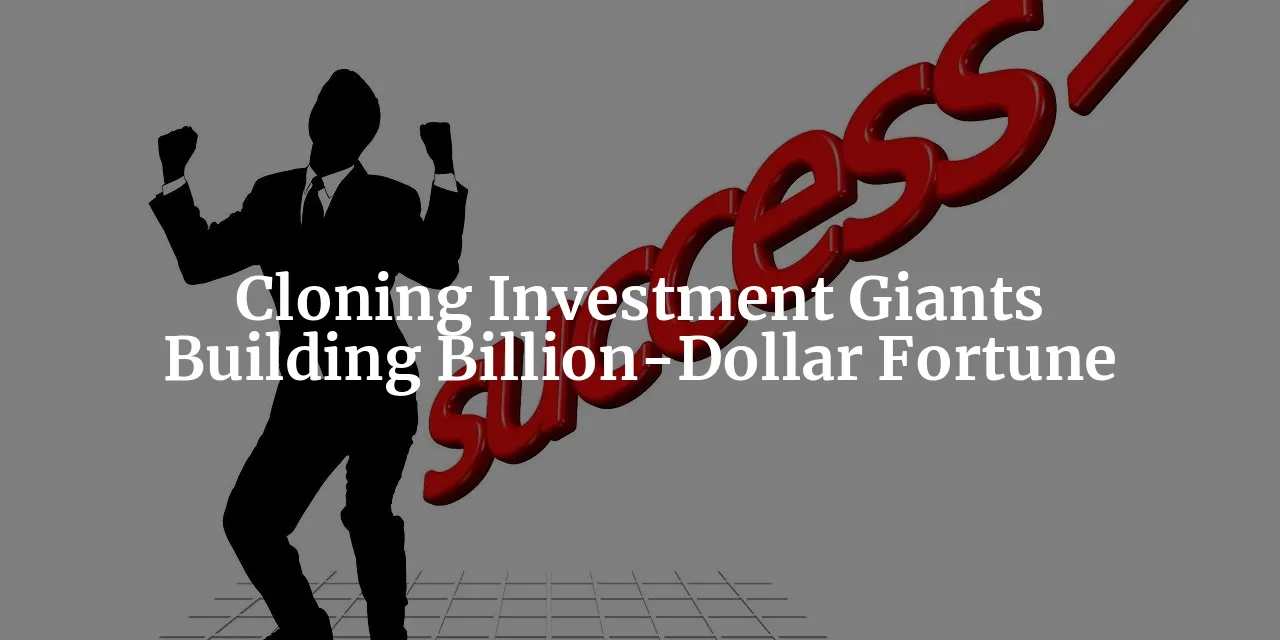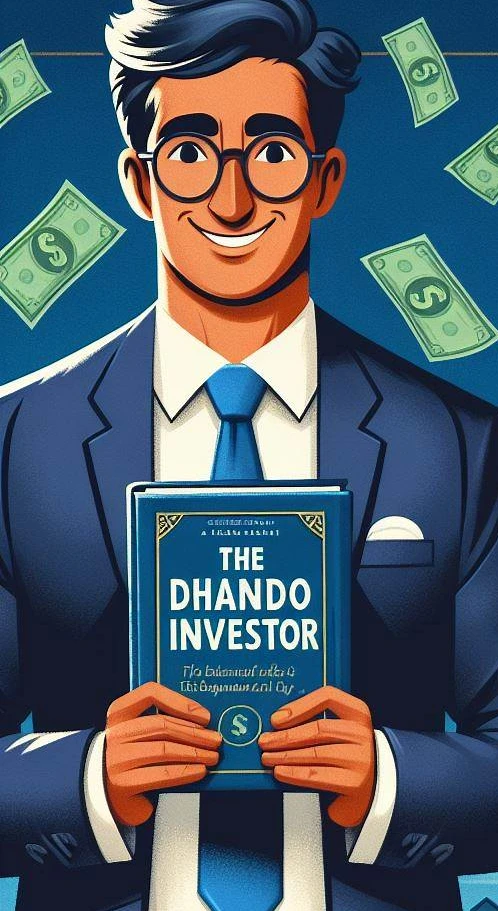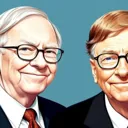Tags: Comments
This fanpage is not officially affiliated with Berkshire Hathaway: Disclaimer
Join us on a journey of financial mastery as we explore how Mohnish Pabrai, a savvy investor and philanthropist, cloned Warren Buffett's investment blueprint to build a billion-dollar fortune. From his early tech entrepreneur days to his philanthropic initiatives, Pabrai's story is a testament to the power of emulating investment giants and making a positive impact on the world. Dive into this captivating tale of wealth, wisdom, and generosity!

Introduction: The Blueprint of a Billion-Dollar Dream
Mohnish Pabrai is a name that resonates with respect and admiration in the investing world. Born in Bombay and later making his mark in America, Pabrai has carved a niche for himself as a savvy investor, a successful businessman, and a generous philanthropist 1. His ambition was not just to build wealth but to emulate one of the greatest investors of all time, Warren Buffett. Pabrai's goal was audacious yet straightforward: to turn $1 million in savings into a $1 billion fortune by mirroring Buffett's investment strategy 2.
The concept of cloning, far from being frowned upon in Pabrai's philosophy, is celebrated as a cornerstone of his investment success. For shareholders of Berkshire Hathaway, Pabrai's journey offers a profound example of how Buffett's blueprint for building wealth can be replicated. This article aims to inspire and inform readers about the disciplined, value-oriented investment approach that has propelled Pabrai towards his financial aspirations. We will delve into the tactics and mindset adopted from Buffett that have been instrumental in Pabrai's wealth-building odyssey.
The Early Years: Foundations of a Financial Titan
Mohnish Pabrai's journey from the bustling streets of Bombay to the financial echelons of the United States is a testament to his determination and business acumen. His time at Tellabs between 1986 and 1991 provided him with invaluable experience in the burgeoning tech industry 1. In 1991, with an entrepreneurial spirit, Pabrai founded TransTech, Inc., an IT consulting and systems integration company. The sale of TransTech in 2000 for a substantial $20 million marked a pivotal moment, providing the capital to fuel his burgeoning interest in investment management 1.
In 1999, a year before selling TransTech, Pabrai laid the foundation for what would become the Pabrai Investment Funds, signaling his transition from a tech entrepreneur to an investment maven 1. It was during these formative years that Pabrai's exposure to Warren Buffett's investment philosophy began to crystallize into a tangible strategy.

The Buffett Epiphany: A Strategy is Born
The pivotal moment in Pabrai's career came when he stumbled upon the staggering investment returns of Warren Buffett, who had achieved an annual return of 31% over 44 years. This discovery ignited a passion in Pabrai to not just admire Buffett's success but to actively replicate it 2. He immersed himself in Buffett's writings, absorbing the wisdom of the Oracle of Omaha's annual letters and investment principles.
Pabrai's hedge fund performance, boasting a return of 1,204% from 2000 to 2018, starkly outperformed the S&P 500's 159% return, underscoring the potency of his Buffett-inspired strategy 2. His investment decisions were guided by a focus on intrinsic value, a strong margin of safety, and a commitment to only invest within his "circle of competence" 2. Pabrai also mirrored Buffett's preference for businesses with durable competitive advantages, led by honest and capable CEOs, and financial statements that exuded clarity and simplicity 2.
The Million-Dollar Lunch: Gleaning Wisdom from the Oracle
In June 2007, Pabrai, along with his friend Guy Spier, made headlines by bidding $650,100 to win a charity lunch with Warren Buffett. The proceeds from this auction went to the Glide Foundation, underscoring the philanthropic synergy between Buffett and Pabrai 3. During the lunch, Buffett imparted key lessons on integrity, the art of saying 'no,' and the importance of pursuing a career that aligns with one's passions 4:
- Approach everything with integrity
- Warren Buffett and Charlie Munger use an internal yardstick to determine integrity
- Buffett asks a question to determine internal yardstick
- Buffett believes in cultivating integrity, especially at a young age
- Get comfortable saying ‘no’
- Buffett believes successful people say ‘no’ to almost everything
- Buffett leaves his time unstructured and values spontaneity
- Bill Gates learns the value of controlling time from Buffett
- Buffett's ability to say "no" contributes to his consistently amazing growth
- Do what you love
- Buffett loves his job and would do it for much less money
- Buffett urges young people to find jobs they love
- Buffett's genuine love for his job was evident at the lunch with Guy and Lory Spier
This encounter with Buffett was not just a meal; it was an investment in wisdom that further solidified Pabrai's investment philosophy. The insights gained from Buffett during this lunch reinforced Pabrai's dedication to cloning Buffett's approach and highlighted the symbolic value of learning directly from the most successful investor in history 3.
The Dakshana Foundation: Investing in Human Capital
In 2005, Pabrai, alongside his wife, founded the Dakshana Foundation, reflecting their shared commitment to philanthropy. The foundation's mission is to alleviate poverty in India by empowering underprivileged students with educational opportunities 1. The Pabrais pledged to donate approximately $1 million annually, echoing Buffett's own philanthropic initiatives and the belief that wealth should be used to create a positive social impact 13.
The Dakshana Foundation's strategy mirrors Pabrai's investment approach: focusing on high-impact, high-return opportunities, but in the social sector. By enabling students to attend elite institutions, the foundation invests in the potential leaders and innovators of the future, much like Pabrai invests in companies with the potential for significant growth 1.
The Cloning Continuum: Pabrai's Ongoing Journey
Pabrai's investment journey is a continuous process of refinement and adherence to Buffett's time-tested principles. He maintains a lean operation, echoing Buffett's own approach, and concentrates on a select few high-conviction investments 2. Pabrai is cautious, avoiding areas like start-ups, IPOs, and countries with poor shareholder rights, to minimize risk and maximize returns 2.
His competitive advantage stems from his willingness to adopt successful ideas from others, particularly Buffett, without concern for being seen as unoriginal. Pabrai's humility and ability to check his ego at the door are crucial to his effectiveness as a cloner. His extreme patience and selectivity in investing, waiting for the perfect pitch, are hallmarks of his strategy 2.
Pabrai's relationship with the Berkshire Hathaway community remains a source of inspiration and fellowship, as he continues to engage with fellow investors who share a reverence for Buffett's investment wisdom 2.
In 2007, Pabrai condensed his investment understanding in the now-classic "The Dhandho Investor: The Low - Risk Value Method to High Returns".

Note: the image does not show the actual book cover. Here are key takeaways from the book 5, which showcase Pabrai's investment philosophy:
- The Dhandho Investor by Mohnish Pabrai focuses on earning great returns with low downside potential
- The book shares principles for understanding high returns on investment
- Focus on buying an existing business with a well-defined model, less risky than starting a new startup
- Buy simple businesses with slow changes in the industry, similar to Warren Buffett's strategy
- Buy distressed businesses in distressed industries at a discounted value, following the principle of being greedy when others are fearful
- Buy businesses with a competitive advantage (moat), such as the example of Patel's Motel business
- Bet heavily when odds are overwhelmingly in your favor, as seen with the Patels buying bankrupt motels at low prices
- Focus on arbitrage to help a business grow immensely, as demonstrated by GEICO
- Always have a margin of safety by buying assets significantly below intrinsic value
- Invest in copycats rather than innovators, as replicators have to spend less time, effort, and money
- Following these principles will lead to handsome returns over a long period of time
- The book uses lucid language to express difficult concepts in a reader-friendly manner
Conclusion: The Rich Tapestry of a Value Investor's Legacy
Mohnish Pabrai's transformation from a tech entrepreneur to an investment guru is a narrative of dedication, learning, and strategic emulation of Warren Buffett's blueprint for wealth creation 12 ↗. The key lessons from Pabrai's strategy—patience, selectivity, and a deep understanding of one's investments—are invaluable for Berkshire Hathaway shareholders and the broader investing community.
Pabrai's life underscores the significance of philanthropy, mirroring Buffett's commitment to giving back and demonstrating how wealth creation can go hand-in-hand with positive societal contributions 13 ↗ ↗. This article serves as a call to action for investors to discover their circles of competence, learn from the successes of investment giants, and contribute meaningfully to society.
Pabrai's story is an inspiring reminder that wealth, when combined with wisdom and generosity, can leave a profound and lasting impact on the world.
Appendix: Pabrai analyzing Berkshire's investment in Coca Cola
If you wonder how Pabrai is thinking, please have a look at a wonderful lecture he gave at the University of California, Irvine in 2016 about Berkshire's investment in Coca Cola ↗↗ and many related topics:
References
-
Turning $1 million into $1 billion by “cloning” Warren Buffett - www.linkedin.com ↩↩↩↩↩↩↩↩↩↩
-
Breaking News, Analysis, Politics, Blogs, News Photos, Video, Tech Reviews - TIME.com - content.time.com ↩↩↩↩
-
These two men paid over $650,000 for lunch with Warren Buffett—here are 3 things they learned - www.cnbc.com ↩
-
Book Summary #1 — The Dhandho Investor: The Low-Risk Value Method to High Returns - medium.com; our summary is a shortened version of Rohan Picha's summary. ↩











